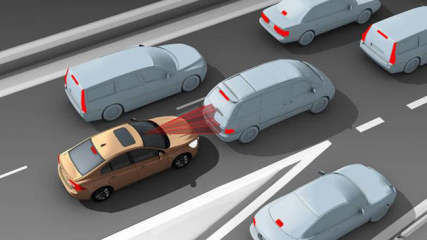Mercedes-Benz B180 2014 News

Mercedes-Benz, Peugeot, Citroen, Ram, Aston Martin models recalled
Read the article
By Justin Hilliard · 13 Jul 2017
The Australian Competition and Consumer Commission (ACCC) has announced its latest round of national safety recalls, with models from Mercedes-Benz, Peugeot, Citroen, Ram and Aston Martin affected.

Mercedes may build small electric car
Read the article
By Malcolm Flynn · 04 Nov 2013
Mercedes-Benz could be working on its own answer to the electric BMW i3, according to a new report. Speaking with Reuters, Daimler CFO Bodo Uebber said the German giant will increase its focus on small cars, in a bid to lower the average age of its buyers.Uebber also said that Mercedes “could use more” involvement with Tesla -- the US electric car brand founded by Elon Musk – in which the German brand has held a stake since 2009.The first fruit of this technological alliance will be the B-Class Electric Drive, which will use a Tesla-supplied motor and battery system when it goes on sale internationally next year.While the B-Class is smaller than Mercedes’ conventional C, E and S class models, the Uebber’s words point to the possibility of electric variants of the smaller-again A-Class or CLA models, to sit above electric versions of the upcoming 2015 Smart Fortwo.This reporter is on Twitter: @Mal_Flynn

Auto braking will save lives and money
Read the article
By Craig Duff · 07 Aug 2012
Autonomous braking systems could save 250 lives and around $5 billion a year, according to Australia’s vehicle crash-testing body.Australian New Car Assessment Program chief executive Nicholas Clarke said automated emergency braking systems are the “next big thing” for vehicle safety.“AEB can probably be considered the next seat belt or electronic stability control equivalent in terms of saving lives,” Clarke said. “Advanced safety assist technology can help remove the weakest link when it comes to car crashes; the driver. “If every car on the road was equipped with AEB, the toll would fall by around 25 per cent.”Many carmakers already offer models with automated braking systems. The cheapest is the Volvo V50 wagon, which is priced from $42,990. Ford’s $33,840 Focus Titanium and the $38,950 Mercedes-Benz B-Class can both be optioned with the technology, costing $2300 and $2500 respectively.AEB systems use video cameras, radars or lasers to scan the road and determine the distance to the vehicle ahead and its relative speed. When the AEB-equipped vehicle gets too close, the software sounds a warning and then actively engages the brakes if the driver fails to respond.Australia was the first country to legislate compulsory seat belt use in 1970-’72. Global motoring body, the FIA, says wearing seat belts has reduced fatalities by 20 per cent in Australia since that date. Federal Department of Infrastructure and Transport figures state the economic impact of the 1288 deaths last year was around $27 billion.ANCAP’s “road map” of technologies required in future cars lists AEB as an optional system for five-star certification by 2017. Clarke expects to have that date revised down _ and predicts it will be mandatory, rather than optional. “We’re already talking to carmakers and lobbying the federal government to introduce these systems as soon as possible,” he said.Pedestrian Council of Australia head Harold Scruby is an enthusiastic supporter of the safety technology but doesn’t expect to see any quick action from the government. “I’ve actually been to see Catherine King pleading with her to mandate rear-vision cameras, which would cost about $100 a vehicle,” he said.“Unfortunately, this seemed to fall on deaf ears. If we can’t get reversing cameras mandated, what hope have we got getting this technology into the Australian Design Rules?” Drivers who buy cars with the technology should also benefit from lower insurance premiums, with some companies offering up to 20 per cent off the regular premium for AEB-equipped models.AEB EXPLAINEDAutonomous emergency braking systems use video cameras, radar or lasers to scan the road ahead and assess the vehicle’s speed as well as the speed of the car in front. Most warn the driver in the approach speed is too high and then automatically apply the brakes if an impending nose-to-tail crash is detected.Depending on the situation, the systems can either prevent an accident outright or dramatically cut the severity of the impact - and therefore the damage to the vehicles and occupants. There is no industry standard for the software. As a result, three differing versions are now sold. The first works at typical city speeds of below 30km/h; others operate at highway speeds. Finally, some systems also detect and react to pedestrians walking out into the vehicle’s path.




